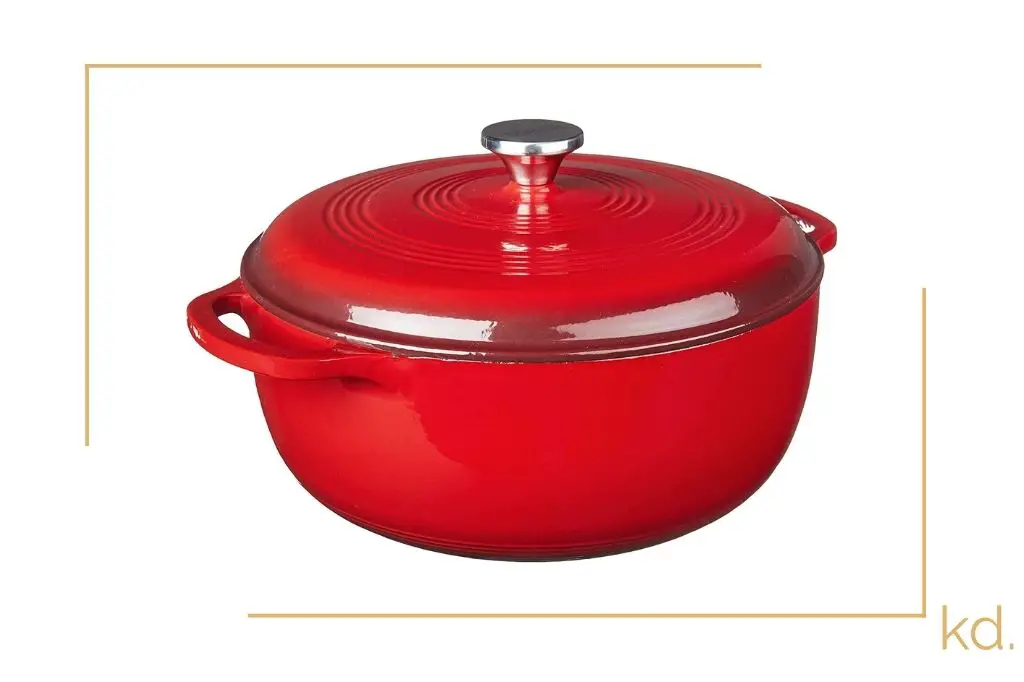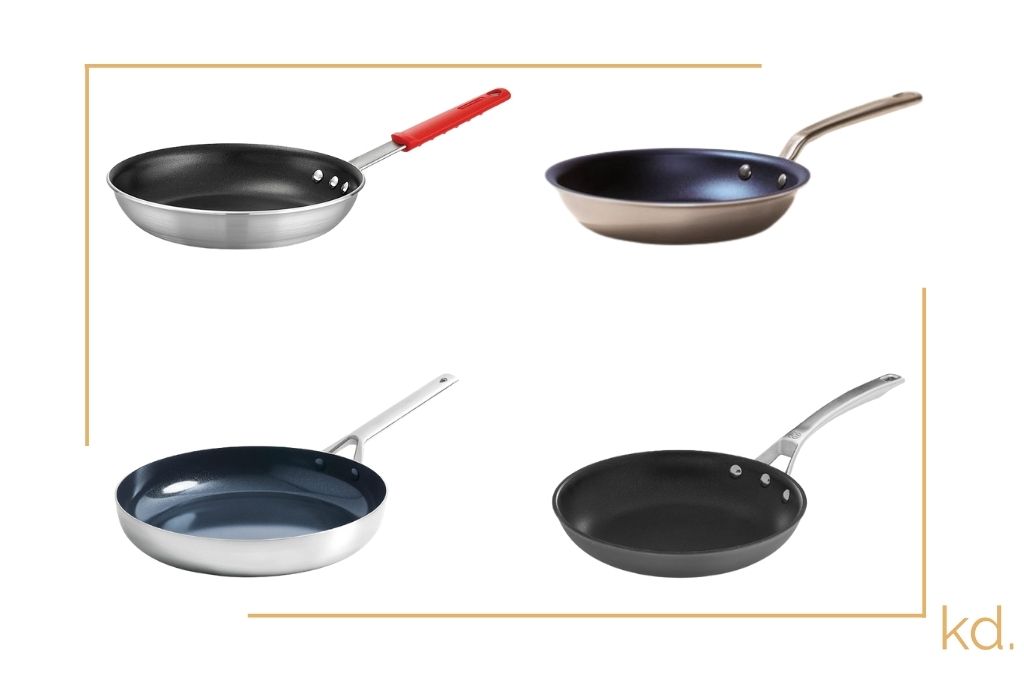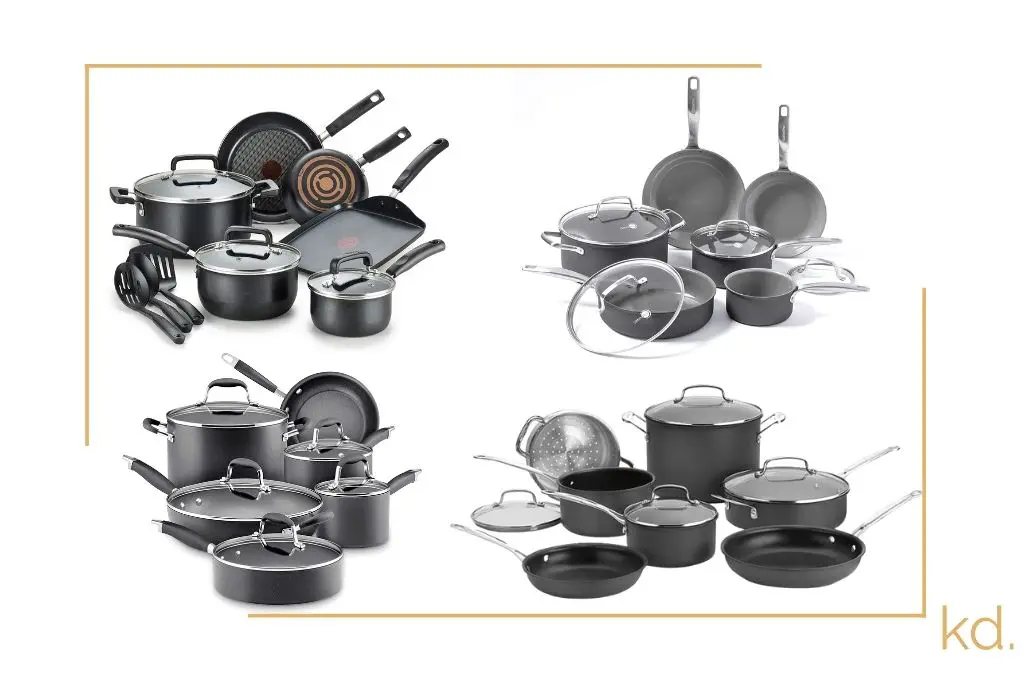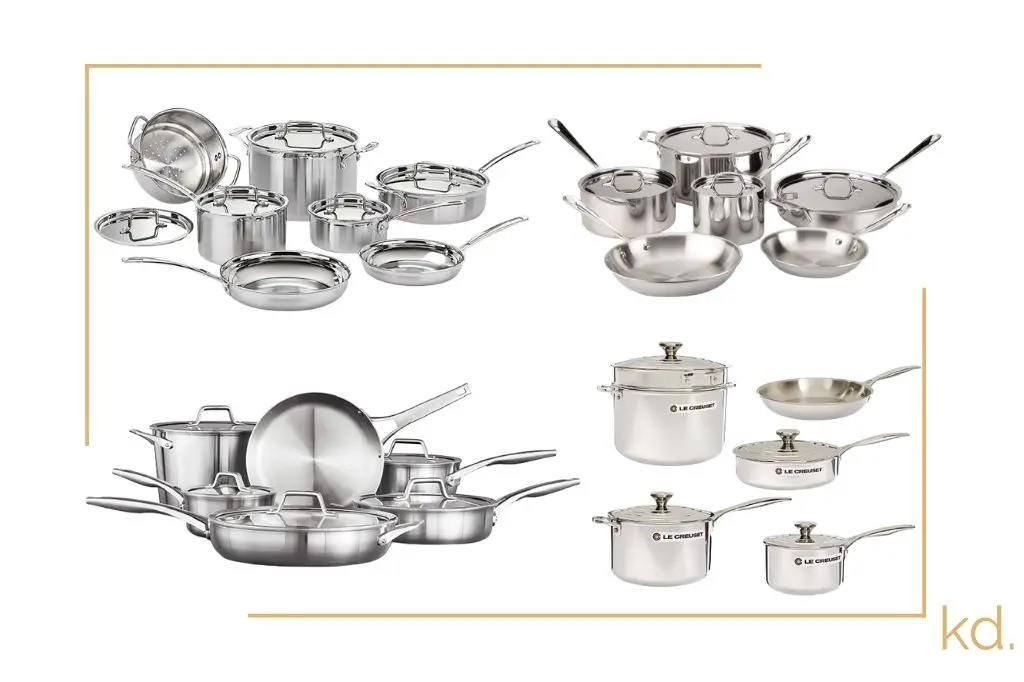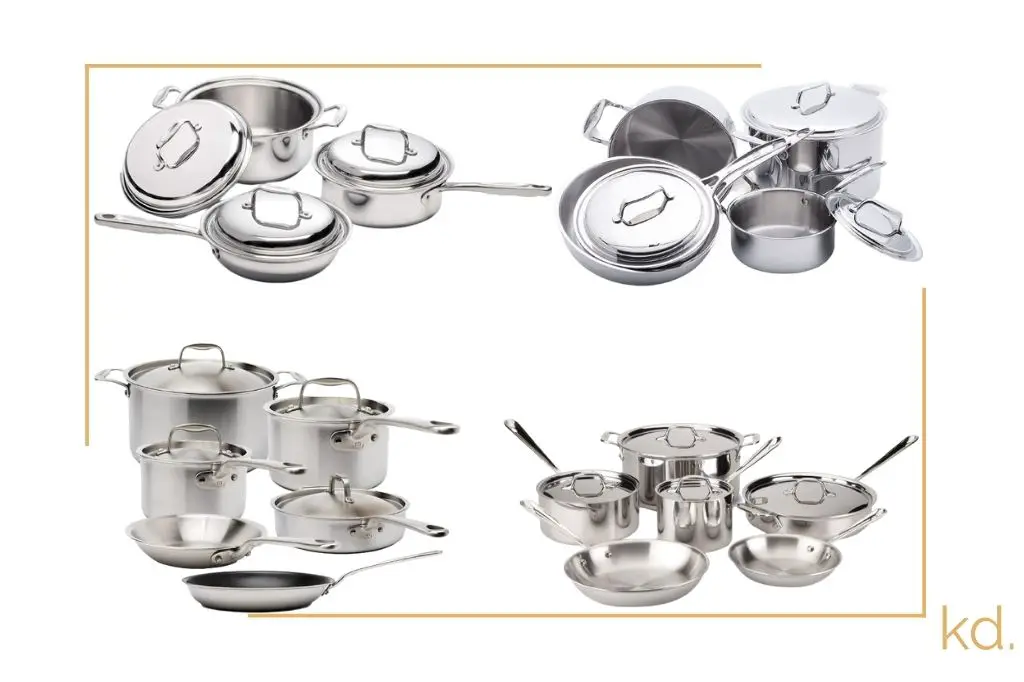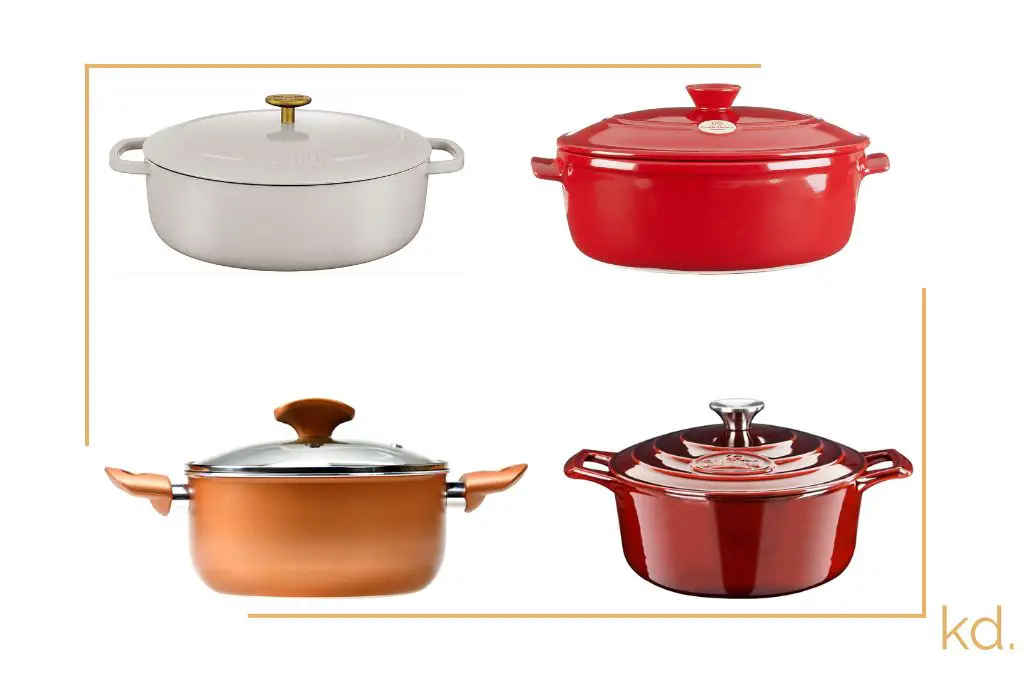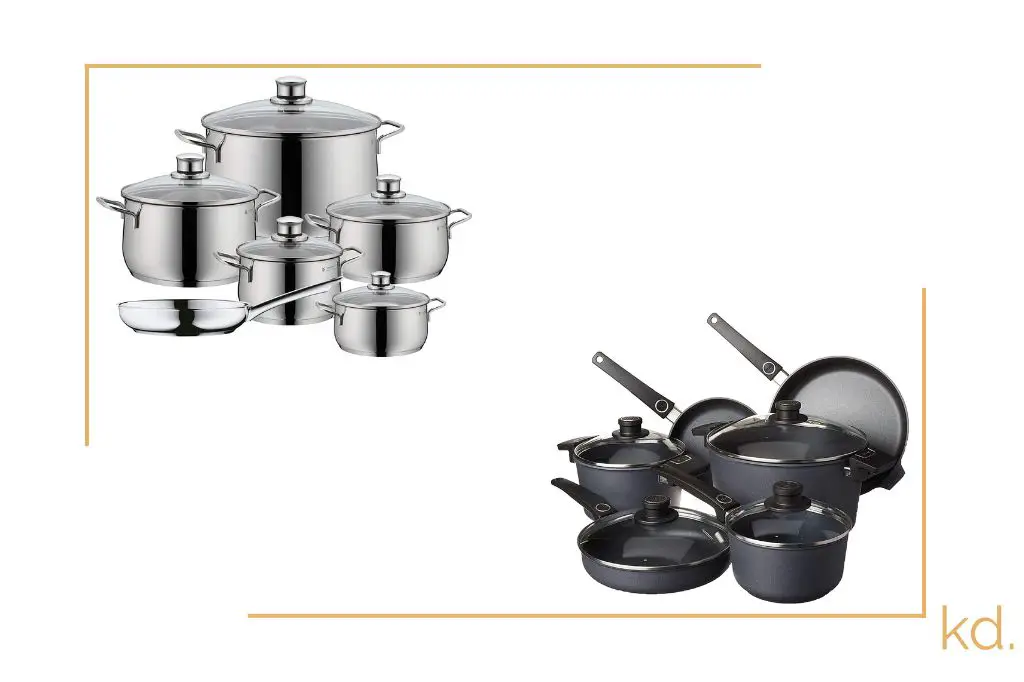Enameled cast iron cookware can be one of the most versatile pieces of kitchen equipment you can own, but it also has some significant drawbacks that might make you think twice about buying some.
This article will give you all the information you need to make an informed decision on whether or not enameled cast iron cookware is right for you.
Use links below for easy navigation
What is Enameled Cast Iron Cookware?
Enameled Cast Iron Cookware Pros and Cons
Enameled Cast Iron Pros
Enameled Cast Iron Cons
Enameled Cast Iron Cookware Vs Cast Iron Cookware
How to care for Enameled Cast Cookware
Bottom Line
What is Enameled Cast Iron Cookware?
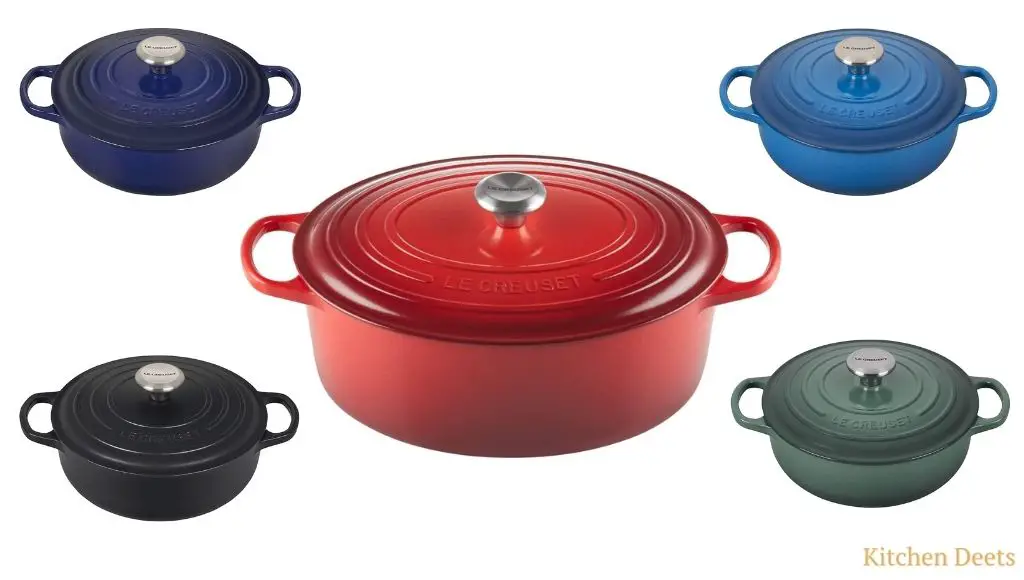
Enameled cast iron cookware is also known as enamelware. It’s a range of products in the kitchen that are coated with enamel on their outer surfaces to add durability, with cast iron as the core component. Enameled cast iron cookware comes in both round pots and rectangular pans.
Related: Cast Aluminum Cookware Pros and Cons
Enameled Cast Iron Cookware Pros and Cons
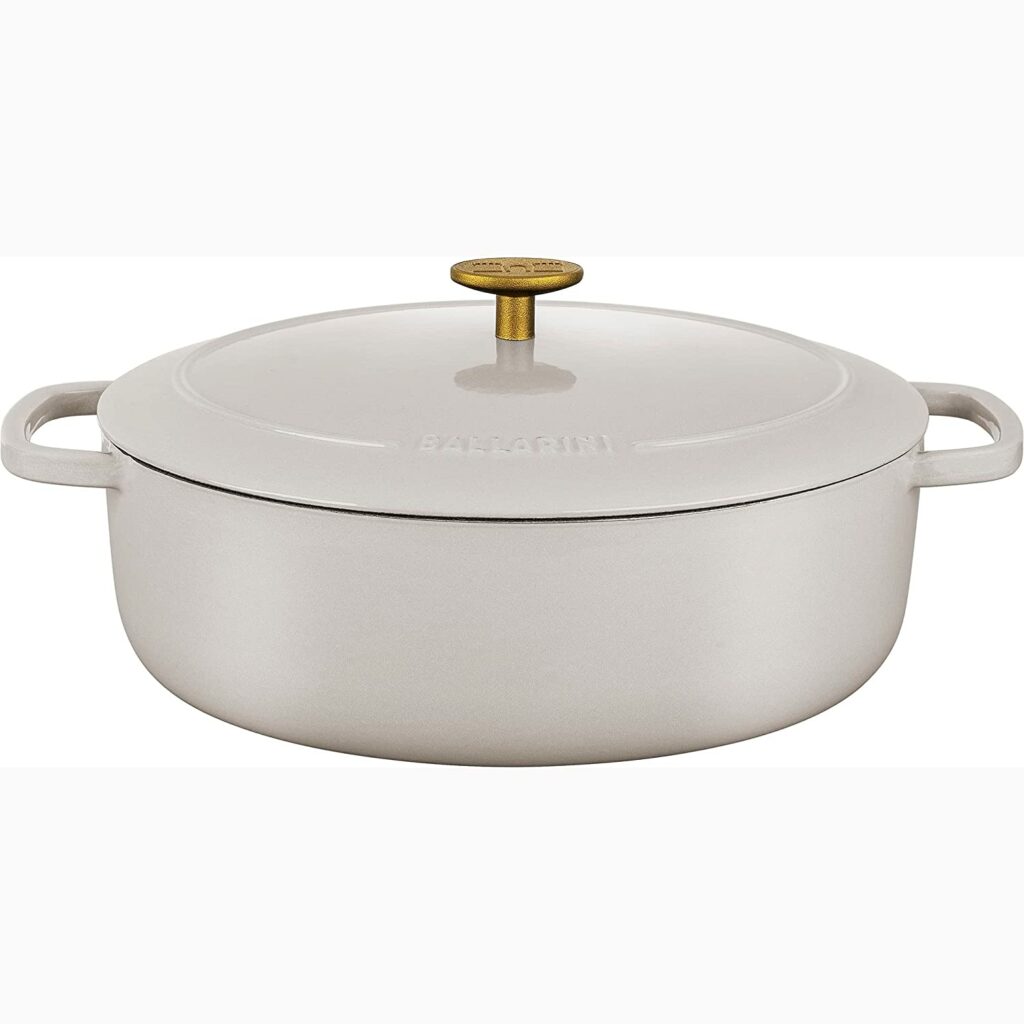
Enameled cast iron cookware, also known as enameled cast iron pots and pans, has gotten some attention lately due to the recent popularity of Dutch ovens and casserole dishes. While it’s true that enameled cast iron cookware can be incredibly useful in your kitchen, it does have some drawbacks that you should know about before you invest in one of these pots or pans.
Let’s take a look at the advantages and disadvantages of Enameled Cast Iron Cookware so you can decide if this pot or pan will be right for you.
Related: Best Dutch Ovens Made in the USA
Enameled Cast Iron Pros
Enameled cast iron cookware is a great choice for any kitchen. Let’s take a look at the pros for enameled cast iron pots and pans.
Highly versatile
Enameled cast iron cookware can go from the stove to the oven and back again, so you can use it to cook anything from stews to cakes.
It’s a highly versatile cookware material that can be used for cooking anything from eggs to casseroles, making it a popular choice for those who love to cook.
Long-lasting
The enamel coating makes the cookware durable and sturdy, so it’ll last for years of use.
High heat tolerance
These pans also have high heat tolerance, meaning they can withstand temperatures of up to 500°F, which makes them perfect for searing meat or boiling water on the stovetop.
Because of its solid construction and thick iron walls, enameled cast iron cookware can take high temperatures without warping or cracking—which makes it perfect for searing meats on the stovetop or baking cakes in the oven!
Check out our article on Best Rice Cooking Pots
Better heat retention
The enamel coating means that your food will stay warm long after cooking than with other types of pots and pans, which makes this type of cookware great for serving meals at parties
Non-Reactive
Enameled cast iron cookware is non-reactive, which means that it will not react with foods or liquids. That’s why it’s such a great option for cooking acidic sauces and marinades.
Related: Marble cookware pros and cons
Elegant Design
These pans come in a variety of colors, from bright to muted and everything in between!
While the design may not be as important to everyone, some people want to make sure their kitchen looks as stylish as possible. With enameled cast iron, you can get the look of a modern kitchen without having to use stainless steel or other materials that can scratch easily over time.
Compatible With All Cooktops
Enameled cast iron is compatible with all cooktops (even induction), you can use it with any stove or oven—whether gas, electric, or induction. Plus, it means you don’t have to worry about uneven heating or hot spots. You’ll get even heat distribution every time.
It is also safe for use on the grill or in the oven at temperatures up to 500°F (260°C).
No Added Iron Taste
Some cast-iron pans can have an unpleasant metallic taste, but the enamel coating keeps the metal from coming into contact with your food.
Because there is no added iron coating on this type of cookware, there won’t be any metallic taste when you cook with it!
Related: Titanium Cookware pros and cons
Enameled Cast Iron Cons
Enameled cast iron is a great, durable material for cookware because it’s strong and non-reactive. But it also has a few downsides.
Heavier
The first thing you should know about enameled cast iron is that it’s heavy. If you have arthritis or any other issues that make lifting heavy objects difficult, this can be a problem. It’s also heavier than most other types of cookware, so it may take some getting used to if you’re switching from something else.
Vulnerable to Shock
Another downside of enameled cast iron is that it’s vulnerable to thermal shock—so if you put cold water into a hot pan, or vice versa, the enamel will break and chip off. To avoid this problem, always let your pot cool completely before putting it back on the heat source.
You’ll have to be extra careful about how you use your pots and pans so they don’t get damaged by this kind of temperature change.
Prone to Chipping
Thirdly, enameled cast iron is prone to chipping—if you drop it or bang it against another object with too much force, the bottom might chip off and expose the metal underneath (which will rust). Be careful!
Related: Granite Cookware Pros and Cons
Rough Bottom
The third con of enameled cast iron is that it has a rough bottom—which makes it difficult to slide across the stovetop when you need to move them around while cooking. If this isn’t a problem for you (maybe because your stove has smooth burners?), then this shouldn’t be too much of an issue either!
Harder to Clean
Enameled cast iron cookware is harder to clean than stainless steel or aluminum cookware. The enamel coating can chip or scratch off if you’re not careful when using it. If this happens, it will expose the bare cast iron underneath and make it more difficult to clean.
Heats Slowly
Enameled cookware heats slowly compared to other types of cookware like stainless steel or aluminum. While this isn’t necessarily a problem for most dishes (especially those that don’t require high heat), it may cause your food to burn if you’re not paying attention while cooking in an oven or on a stovetop burner.
Expensive
Enameled cookware tends to be more expensive than other types of cookware because they’re made from two materials instead of one (like stainless steel). This can be an issue if you need several pieces for your kitchen setup to work efficiently–you may end up spending more money than necessary just because they aren’t available in bulk quantities like other types of cookware would be!
Hot Handles
The handles of enameled cast iron cookware are often hot when they come out of the oven or off the stove. This can be dangerous if you have children or pets in the kitchen with you while you cook.
Enameled Cast Iron Cookware Vs Cast Iron Cookware
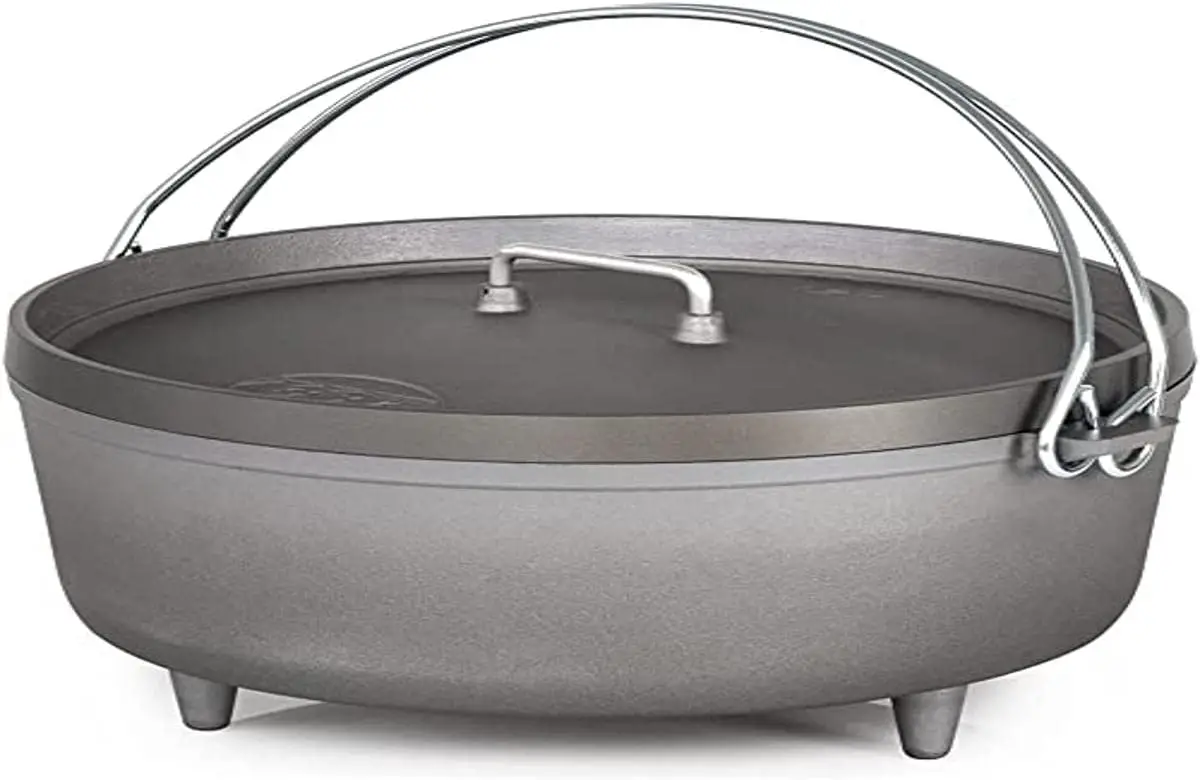
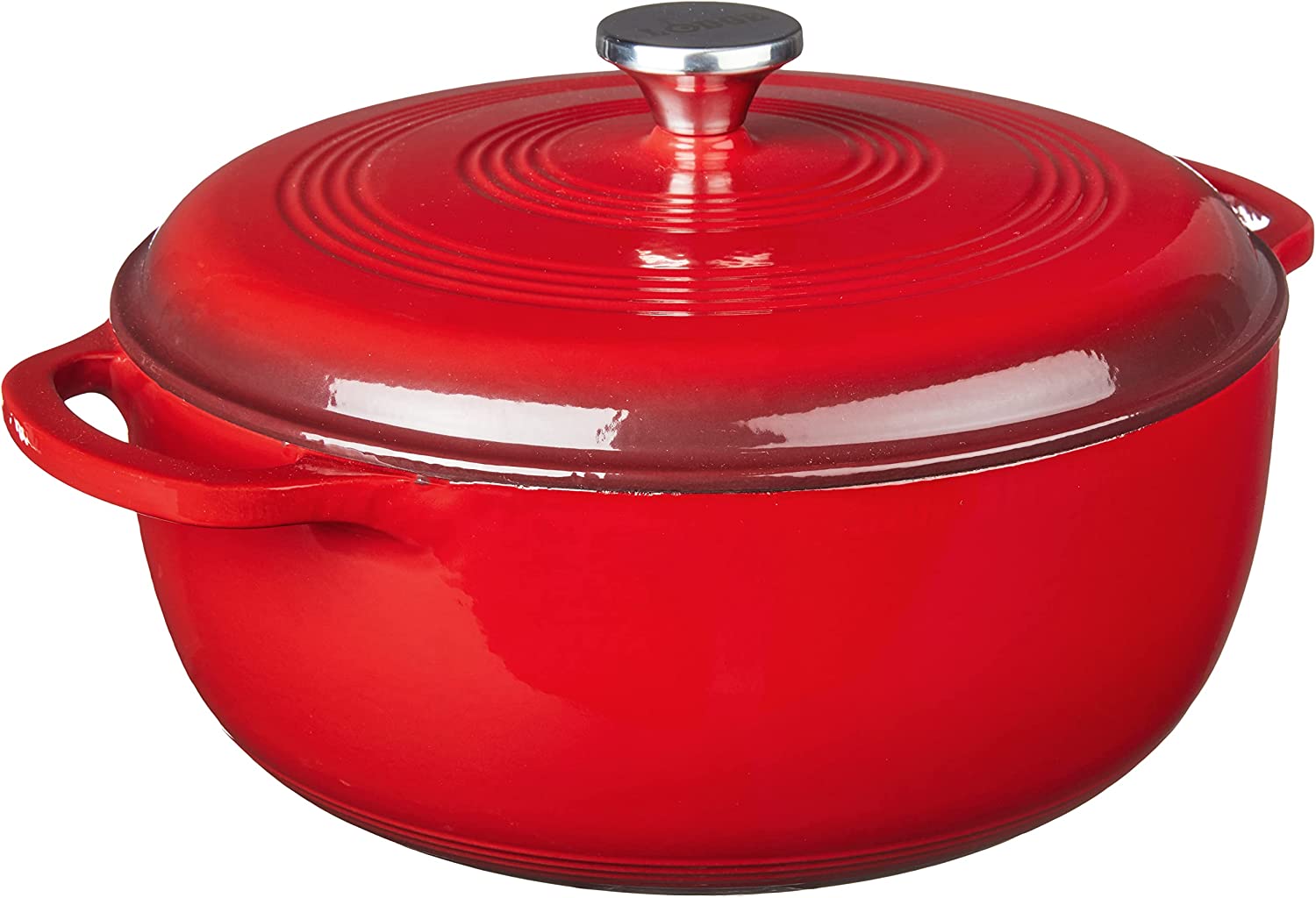
Enameled Cast Iron and Cast Iron Cookware are both made of cast iron. The difference is that enameled cast iron is coated with a layer of enamel, which makes it easier to clean and prevents food from sticking. Whereas Cast Iron Cookware is usually uncoated, with a rough surface, it’s made from cast iron, which is 98% iron and 2% carbon.
Related: Calphalon cast iron skillet
Let’s take a look at their differences in the table below:
| Attributes | Cast Iron | Enameled Cast Iron |
|---|---|---|
| Materials | 98% iron and 2% carbon | Enameled coating on cast iron |
| Design | Iron skillets, griddles. | Dutch ovens, skillets, griddles, bake ware. |
| Finish | Dark black | Elegant Bright Colors |
| Heat Source | Compatible with All heat sources | Compatible with All stovetops |
| Temperature | Temperatures 500 °F + | Temperatures up to 500 °F |
| Heat Retention | High | Medium |
| Performance | Good for sear steaks. | Good for baking, slow cooking, and roasting. |
| Durability | High durability, lasts longer | High durability, lasts longer |
| Clean Up | Laborious cleanup | Easy cleanup |
| Maintenance | Requires seasoning | No seasoning required |
| Iron Release | Yes | No |
| Price | Less costly | More costly |
How to care for Enameled Cookware
Enameled cast iron cookware is super durable, but it does have some downsides. For example, it can get scratches and build rust if you don’t take proper care of it. But you can avoid this by following a few simple guidelines:
1) After each use, thoroughly dry out your enameled cast iron cookware and store it in an airtight container. This will prevent moisture from building up inside the pan and causing rusting.
2) Do not use steel wool on your enameled cast iron pan! Steel wool will scratch away the enameled coating on your pan and make it more susceptible to rusting. Although enameled cookware are dishwasher safe but it is best to hand wash this cookware with warm water and dish detergent.
Is enameled cast iron cookware rust-free?
Yes and no.
Yes, because it’s a type of metal that does not naturally rust. Enameled cast iron cookware is made of cast iron that has been covered in porcelain enamel. The porcelain enamel prevents rusting by creating a coating that prevents moisture from penetrating the metal.
No, because over time, the enamel can chip or scratch and expose the iron underneath to air and moisture. This can cause rust to develop on the pan.
Is scratched enamel cookware safe?
No! Scratched enamel cookware can leach toxic chemicals into your food if it’s used to cook acidic foods like tomatoes or lemon juice.
A scratched enamel surface has microscopic holes where food particles can get trapped, which creates pockets where bacteria can grow. Over time, these scratches can become larger and deeper causing more damage to your pan’s surface and allowing harmful substances to enter your food while cooking.
There have been many studies done on this topic, so you may have seen this information floating around the internet recently (like here).
Bottom Line
Enameled cast iron cookware is durable, inexpensive, and makes it easy to cook up delicious meals. It has many uses in the kitchen, including baking and serving dishes, as well as slow cooking. However, it does have some drawbacks that should be considered before purchasing.
